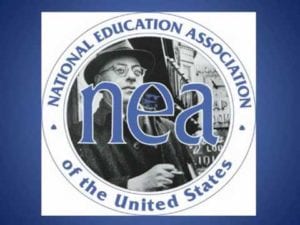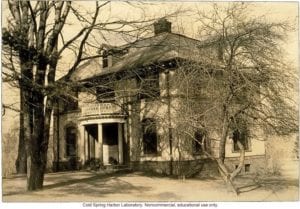Incorporated in 1911 as the Carnegie Corporation by Andrew Carnegie and Elihu Root, Secretary of War under McKinley and Secretary of Interior under Theodore Roosevelt, [and] lawyer for J.P. Morgan. Root took charge of the Carnegie fortune for the program of the World Order. Although the name of Andrew Carnegie looms large on the roster of American foundations, for many years the five Carnegie foundations were mere appendages of the Rockefeller Foundation. Carnegie sold his steel interests to J.P. Morgan and the Rothschilds for into the billions, but was not permitted to walk away with the money. Like Cecil Rhodes, Rockefeller, and others, he was directed to put it into foundations which would carry out the globalist agenda.1

NEA Annual Mtg: “the Carnegie and Rockefeller Foundations… control the policies,… menace true academic freedom and defeat the primary purpose of democracy…”
The philanthropic agenda of the Carnegie and Rockefeller Foundations was made explicit in 1914 when the National Education Association passed a resolution at its annual meeting from July 4-11 in St. Paul, Minnesota. An excerpt follows: We view with alarm the activity of the Carnegie and Rockefeller Foundations—agencies not in any way responsible to the people—in their efforts to control the policies of our State educational ...

Walsh Committee Created: Findings Later Concluded that “Colleges had Surrendered their Religious Identifications… to Comply with Foundation Requirements to Receive Grants…”
The Walsh Committee was created to review industrial relations and scrutinize US labor laws. The commission studied work conditions throughout the industrial United States between 1913 and 1915. The final report of the Commission, published in eleven volumes in 1916, contain tens of thousands of pages of testimony from a wide range of witnesses, including scores of ordinary workers, and the titans of capitalism, including Daniel Guggenheim, George ...

The Flexner Report, Sponsored by the Rockefeller and Carnegie Foundation, is Published Establishing New Standards For Medical Education
This highly influential report, sponsored by the Rockefeller’s and Carnegie Foundation, evaluated medical schools and restructured American medical education. It set up a new standard so that schools could only be accredited if they showed an emphasis in drug based research and treatment. Homeopathy and other alternative approaches to medicine were no longer recognized. Abraham Flexner, author of the report, was on the staff of the ...

The Station for Experimental Evolution, a Eugenics Lab, Formerly Opens Funded by the Carnegie Institute of Washington
The Carnegie Institution established a laboratory complex at Cold Spring Harbor on Long Island that stockpiled millions of index cards on ordinary Americans, as researchers carefully plotted the removal of families, bloodlines and whole peoples. From Cold Spring Harbor, eugenics advocates agitated in the legislatures of America, as well as the nation's social service agencies and associations. The Harriman railroad fortune paid local charities, such as ...



